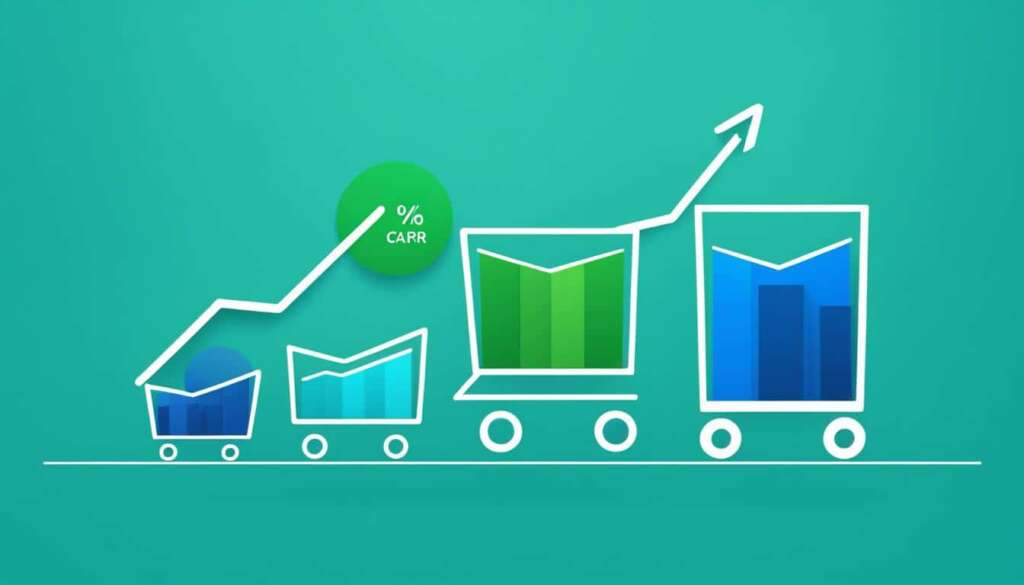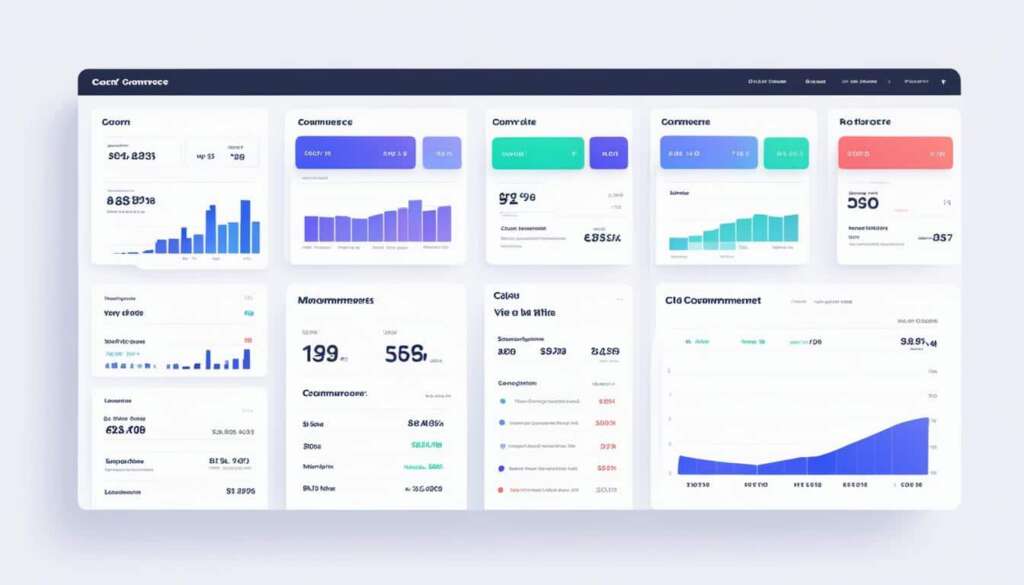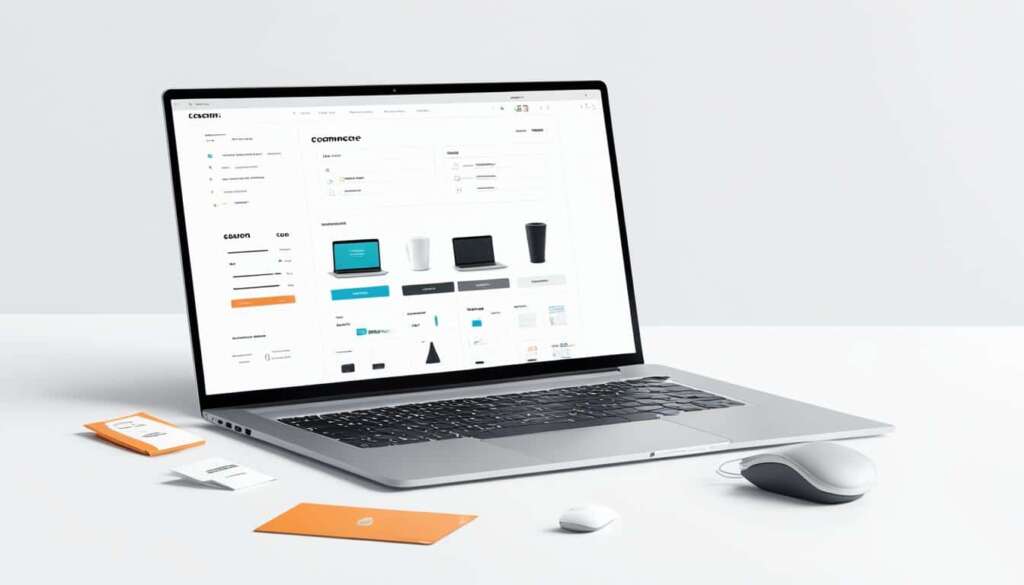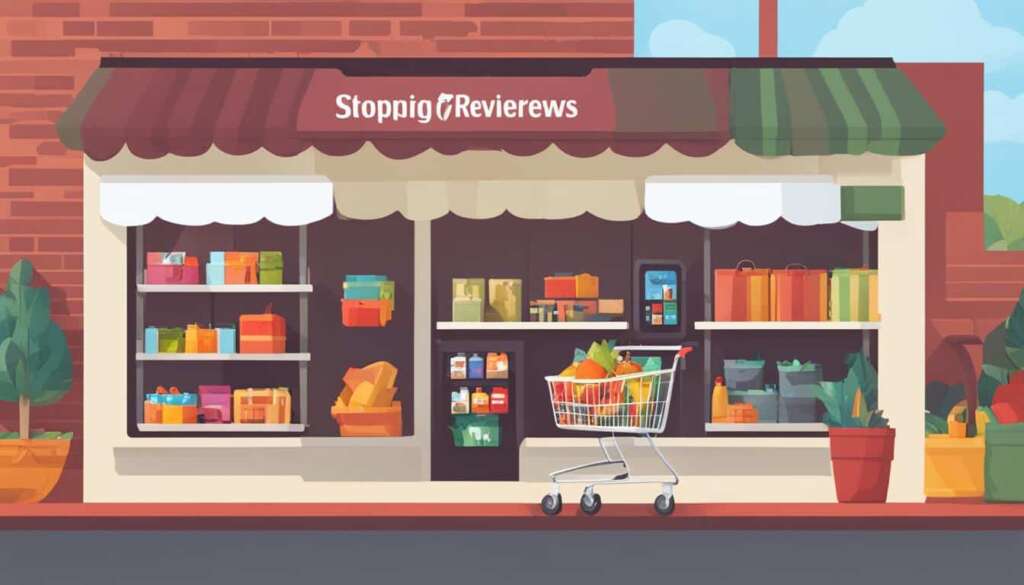Table of Contents
In an increasingly competitive digital buying world, businesses need to focus on conversion rates to encourage customers to purchase from their online stores. Conversion rates, along with personalisation efforts, are valuable tools for measuring return on investment (ROI) in the ecommerce industry. According to a survey, nearly 90% of personalisation efforts result in a positive ROI. To optimise conversion rates, businesses must understand what a conversion is, how to calculate conversion rates, and what constitutes a good ecommerce conversion rate. Average ecommerce conversion rates are around 2.5-3%, with a baseline goal of achieving a conversion rate of 3% or higher. Additional metrics that matter when discussing conversion include bounce rate, exit rate, click-through rate (CTR), average session duration, and average page depth. Several tools such as HotJar, Quantcast Measure, Google Analytics, and BigCommerce Analytics can help improve ecommerce conversion rates.
Understanding Ecommerce Conversion Rates
Ecommerce conversion rate is a vital metric that determines the percentage of website visitors who make a purchase or engage in specific actions, such as adding items to a cart, creating a wishlist, signing up for emails, or sharing on social media. Successfully optimizing conversion rates is essential for achieving online sales and enhancing business performance. This is where conversion rate optimization (CRO) plays a crucial role, as it focuses on improving every aspect of the user experience to drive more conversions and increase sales.
Conversion rate optimization (CRO) involves analyzing and optimizing various customer touchpoints, such as landing pages and category pages, to guide visitors toward an online sale. By understanding user behavior and preferences, businesses can create a more seamless and engaging user experience that encourages conversions.
To calculate the conversion rate, divide the number of conversions by the total number of website visitors and multiply by 100%. This provides a percentage that represents the effectiveness of a website in converting visitors into customers or leads.
Before embarking on a journey to increase conversion rates, it’s crucial for businesses to analyze their current visitor behavior and set benchmarks for success. This involves examining key performance indicators (KPIs) such as bounce rate, exit rate, click-through rate (CTR), average session duration, and average page depth. By understanding these metrics and setting realistic goals, businesses can measure their progress and identify areas for improvement.
The Role of User Experience in Conversion Rates
User experience (UX) plays a significant role in influencing conversion rates. A well-designed, intuitive, and visually appealing website can instill trust and confidence in visitors, improving their likelihood of making a purchase. On the other hand, a complicated or frustrating user experience can lead to high bounce rates and abandoned carts.
“A seamless and engaging user experience helps create a positive perception of a brand and contributes to higher conversion rates.”
To optimize the user experience and increase conversion rates, businesses should focus on:
- Streamlining the navigation and search functionality.
- Ensuring fast-loading pages and responsive design for mobile users.
- Clearly communicating product information and benefits.
- Simplifying the checkout process and offering secure payment options.
- Providing social proof, customer reviews, and trust signals.
Benefits of Conversion Rate Optimization (CRO)
Conversion rate optimization (CRO) is a strategic approach that involves continuous testing, analysis, and improvements to maximize the effectiveness of a website in converting visitors into customers. Implementing CRO practices can yield a range of benefits, such as:
- Increased sales and revenue
- Improved return on investment (ROI)
- Enhanced customer engagement and satisfaction
- Better understanding of customer behavior and preferences
- Optimized marketing campaigns and budget allocation
Investing time and resources into CRO can have a substantial impact on an ecommerce business’s success. It allows businesses to adapt to evolving customer needs, preferences, and industry trends, ensuring continued growth and competitiveness.
| Key Metrics | Definition | Importance |
|---|---|---|
| Bounce Rate | The percentage of visitors who leave a website after viewing only one page. | Indicates the effectiveness of the landing page and overall user engagement. |
| Exit Rate | The percentage of visitors who leave a website from a particular page. | Highlights potential issues with specific pages or sections on a website. |
| Click-Through Rate (CTR) | The percentage of users who click on a specific link or advertisement. | Measures the effectiveness of marketing campaigns and call-to-actions. |
| Average Session Duration | The average time a visitor spends on a website during a session. | Indicates the level of user engagement and interest in the website’s content. |
| Average Page Depth | The average number of pages viewed per session. | Reflects user engagement and interest in exploring the website’s content. |
What is a Good Ecommerce Conversion Rate?
The average ecommerce conversion rate falls between 2.5-3%. However, a good ecommerce conversion rate is subjective and can vary depending on the industry and business goals. Achieving a conversion rate of 3% or higher can be considered a baseline goal for online stores.
When evaluating the success of an ecommerce conversion rate, it’s important to consider other metrics that contribute to overall performance and user engagement. Some of these metrics include:
- Bounce rate: The percentage of visitors who leave the website after viewing only one page.
- Exit rate: The percentage of visitors who leave the website from a specific page.
- CTR (Click-through rate): The percentage of users who click on a specific link or ad compared to the total number of users who view it.
- Average session duration: The average length of time users spend on the website during a single session.
- Average page depth: The average number of pages a user visits during a single session.
Tracking and analyzing these metrics can help businesses identify areas for improvement and increase the chances of conversions. By understanding user behavior and engagement levels, businesses can optimize their websites to enhance the overall conversion rate.
To further illustrate the importance of these metrics, let’s take a look at a comparison table:
| Metric | Definition | Optimal Range |
|---|---|---|
| Bounce Rate | The percentage of visitors who leave the website after viewing only one page. | 10-40% |
| Exit Rate | The percentage of visitors who exit the website from a specific page. | 20-50% |
| CTR (Click-through Rate) | The percentage of users who click on a specific link or ad compared to the total number of users who view it. | 2-5% |
| Average Session Duration | The average length of time users spend on the website during a single session. | 1-3 minutes |
| Average Page Depth | The average number of pages a user visits during a single session. | 3-6 pages |
These benchmarks can serve as a starting point for businesses to assess their performance and set targets for improvement.
Tools That Can Help Improve Ecommerce Conversion Rates
When it comes to improving ecommerce conversion rates, businesses have access to a range of valuable tools that can identify issues and optimize performance. These ecommerce tools provide insights into user behavior and offer valuable data to guide businesses in their conversion rate optimization efforts. Let’s take a closer look at some of the most effective tools:
HotJar
HotJar is a powerful tool that provides in-depth insights into user behavior. With features such as heat mapping, click tracking, and scroll-depth mapping, businesses can gain a comprehensive understanding of how users interact with their website. By identifying areas where users drop off or encounter issues, businesses can make data-backed improvements to increase conversion rates.
Quantcast Measure
Quantcast Measure offers advanced demographic data on a per-click basis, allowing businesses to gain a deeper understanding of their website visitors. By analyzing demographic information, businesses can better tailor their marketing efforts to target their ideal audience. This personalized approach can lead to improved conversion rates and higher sales.
Google Analytics
Google Analytics is a popular analytics tool that provides businesses with valuable information about their website visitors. From tracking how users found the website to analyzing browsing behavior and conversion data, businesses can gain actionable insights to optimize their ecommerce performance. By leveraging the power of Google Analytics, businesses can make data-driven decisions to improve their conversion rates.
BigCommerce Analytics
BigCommerce Analytics offers a range of dashboards and analytics tools specifically designed for ecommerce businesses. With features that analyze cart abandonment, in-store searches, and various other performance metrics, businesses can identify areas for improvement. By utilizing BigCommerce Analytics, businesses can optimize their online stores and boost conversion rates.
By leveraging tools like HotJar, Quantcast Measure, Google Analytics, and BigCommerce Analytics, businesses can address conversion rate issues, enhance user experience, and ultimately maximize their ecommerce conversion rates. These tools provide valuable insights and data, empowering businesses to make data-backed decisions and drive higher sales in the highly competitive ecommerce landscape.

Comparison of Ecommerce Tools
| Tool | Main Features | Benefits |
|---|---|---|
| HotJar | Heat mapping, click tracking, scroll-depth mapping | Comprehensive insights into user behavior |
| Quantcast Measure | Advanced demographic data on a per-click basis | Deeper understanding of website visitors |
| Google Analytics | Browsing behavior analysis, conversion tracking | Valuable insights for data-driven decision-making |
| BigCommerce Analytics | Cart abandonment analysis, in-store search tracking | Optimization of online stores for improved performance |
Conclusion
In conclusion, optimizing the ecommerce conversion rate is essential for businesses looking to increase revenue and stay competitive in the online market. By understanding conversion rates, calculating benchmarks, and aiming for a conversion rate of 3% or higher, businesses can maximize their online sales potential. Monitoring metrics such as bounce rate, exit rate, CTR, average session duration, and average page depth is crucial for gaining insights into user engagement and overall performance.
Tools like HotJar, Quantcast Measure, Google Analytics, and BigCommerce Analytics are valuable resources that can help identify conversion rate issues and guide businesses in implementing effective strategies to improve ecommerce performance. Continuously working on conversion rate optimization is key to attracting more customers and increasing sales in the highly competitive ecommerce industry.
By prioritizing conversion rate optimization and leveraging the power of data-driven insights, businesses can create a seamless online shopping experience, boost customer satisfaction, and drive sustainable growth. Investing time and effort in optimizing the ecommerce conversion rate is a worthwhile endeavor for any online retailer looking to thrive in today’s digital landscape.
FAQ
What is an e-commerce conversion rate?
An e-commerce conversion rate refers to the percentage of website visitors who make a purchase or engage in other desired actions, such as adding products to a cart or signing up for emails.
How can businesses optimize their e-commerce conversion rate?
Businesses can optimize their e-commerce conversion rate by improving the user experience on their website, conducting conversion rate optimization (CRO) on various touchpoints, and using tools such as HotJar, Quantcast Measure, Google Analytics, and BigCommerce Analytics.
What is considered a good e-commerce conversion rate?
A good e-commerce conversion rate can vary depending on the industry and business goals. The average conversion rate falls between 2.5-3%, but a baseline goal for online stores is to achieve a conversion rate of 3% or higher.
What other metrics are important when discussing conversion rates?
In addition to the conversion rate, other important metrics include bounce rate, exit rate, click-through rate (CTR), average session duration, and average page depth. These metrics help measure user engagement and overall performance on a website.
Which tools can help improve e-commerce conversion rates?
There are several tools available to help businesses improve e-commerce conversion rates. Some popular options include HotJar, which provides insights into user behavior through heat mapping and click tracking, Quantcast Measure, which offers advanced demographic data, Google Analytics, which provides valuable information about visitors and their browsing behavior, and BigCommerce Analytics, which offers various dashboards to analyze performance metrics.













